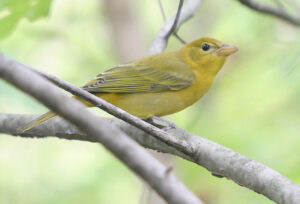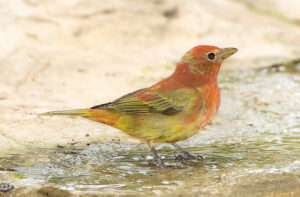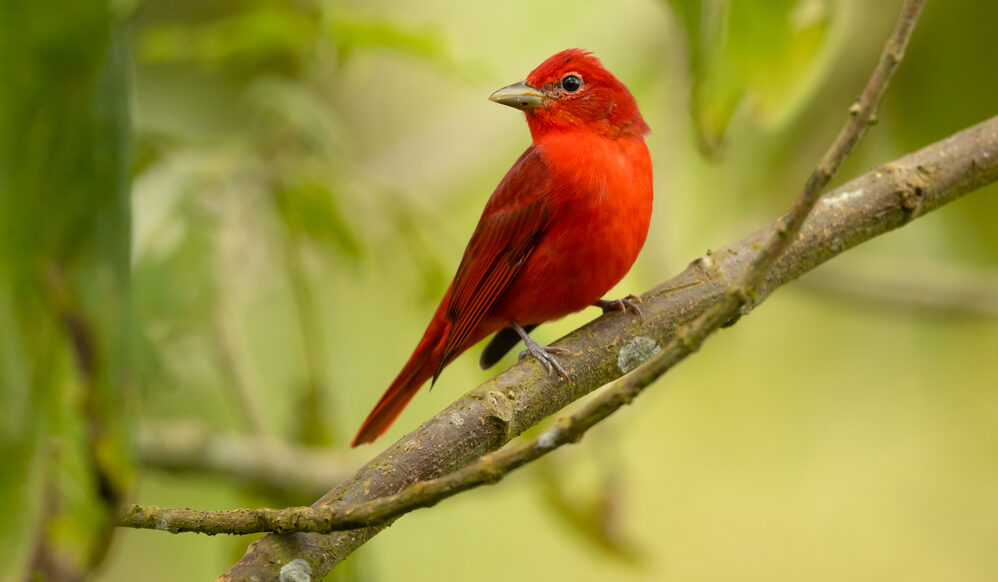Summer Tanager, Piranga rubra
Bill Rowe
Last week’s article began “On any summer hike through the woods…” and led one to the Eastern Wood-Pewee calling among the trees. This week we take the same hike and discover a more colorful bird, the Summer Tanager—one that’s just as common in midwestern forests, but also just as unfamiliar to those who aren’t yet “into birds.” Perhaps that’s because the tanager stays out in the woods and up in the foliage, rather than hanging around your yard, like the equally vivid cardinal. At any rate, a bit more attention to the voice up in the oaks along the trail should produce some good looks at this handsome species, whether it’s the male singing his robin-like phrases, or either sex giving their staccato call notes, something like pi-tuk or pi-tuk-i-tuk. Like the pewee and many other warm-weather species, the Summer Tanager spends half or less of its year with us, migrating south in September/October to a very broad winter range that extends from Mexico all the way to Peru. While here in the eastern U.S., it remains a more-or-less southern bird, with the northern border of Missouri being close to its upper latitude limit; its breeding range then continues southwestward across Texas and into the river valleys of New Mexico and Arizona, among the willows and cottonwoods. Until recently, the Summer Tanager and its North American cousins (the Scarlet, Western, and Hepatic Tanagers) were thought to be closely related to the diverse and boldly colored tanagers of the Neotropics—but their DNA, which can yield the truth in biology just as in a court of law, has shown them to be not really tanagers at all but close relatives of our cardinals, buntings, and grosbeaks! So far, however, no one has dared to rename them, e.g., the “Summer Piranga.”
IDENTIFICATION: An adult male Summer Tanager is our most completely all-red bird, without even the black mask of a cardinal; unlike the Scarlet Tanager, he retains his red color year-round. The female is monochromatic too, from dull yellow to a rich golden tone, sometimes even with a reddish suffusion; her wings, though slightly darker than her body, don’t contrast strongly like the dark gray or blackish wings of a female Scarlet Tanager, which in addition has a more greenish-yellow body. The immature male is colored like a female for his first fall and acquires the red over the following spring. The Summer Tanager’s bill, varying from grayish to yellowish, is both long and stout, though not as thick as the seed-cracking bills of cardinals.
ST. LOUIS STATUS: A common summer resident in mature deciduous woods and sometimes parks, but seldom suburbs. While still very rare in winter, and requiring documentation then, it has shown up more often in the last few years as a winter visitor to feeders, looking for a handout of seeds or suet.
Learn more and listen to the songs and calls of Summer Tanagers here.


Female: rich yellow color, large pale bill.
Photo Credit: Al Smith




